By: Hannah Park, Interpretive Ranger at Bear Brook State Park
Have you heard the pond chorus? The beautifully orchestrated symphony, ranging from sopranos to basses, is made possible by the vocal instrumentation of amphibians. Lets explore the different frog and toad calls that add to the nighttime noises.
American Bullfrog
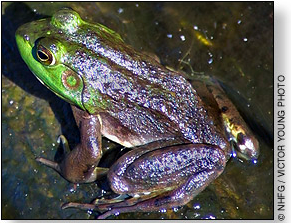
The Bullfrog is the largest native frog in North America with the ability to grow to eight inches. Bullfrogs are opportunistic feeders and will eat just about anything smaller than themselves, including other frogs, snakes, birds, and rodents. Its call is a series of loud, low notes sounding like “jug-o-rum”.
American Toad
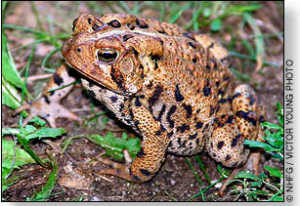
The American Toad is probably most familiar to us as a guest in the garden as it will wander far from water after the breeding season. Their melodic trill was once referred to as “the dream of the toad” by Henry David Thoreau in 1853. Lasting between 5 and 30 seconds, it’s definitely hard to ignore. While we should never touch wild animals, you cannot get warts from toads. They are innocent.
Pickerel Frog
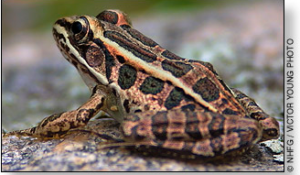
The beautifully spotted Pickerel Frog above is the only poisonous frog native to the United States. Herpetologist will actually avoid transporting other species in the same bag as a Pickerel Frog because its poisonous secretions will kill the other frogs. If you must pick up this frog, be sure to wash your hands thoroughly afterwards. Its call resembles a short snore, lasting about two seconds.
Wood Frog
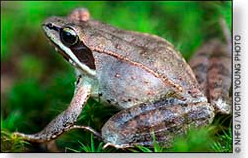
As you can guess by its name and coloring, this frog enjoys a woodland habitat. They are also the only North American amphibian species found north of the Arctic Circle, where trees are nonexistent. Wood Frogs possess cryoprotectant chemicals that actually prevent them from freezing to death. They breed after the snow melts, making them one of the first spring breeders. The Wood Frogs duck-like cackling reveals their position in shallow pools.
Spring Peeper
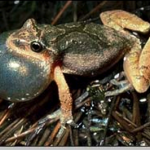
The Spring Peeper does indeed peep in the spring. Their calls are some of the first sounds heard each spring. They will call day and night as long as the temperature stays above freezing. The cross like coloration on the frogs back is referred to in the scientific name, crucifer. This is also the smallest frog of those talked about in this blog, ranging from 3/4″ to 1 1/2″.
Again, we should try to avoid catch frogs and toads with our hands. They do breathe through their skin and the oils on our hands could block their pores, making breathing difficult. As Kermit the Frog says, it ain’t easy being green, but hopefully you feel more comfortable identifying the calls of the pond and the croakers that make them. To learn more about the amphibians mentioned and a few more species, visit New Hampshire Fish and Game’s website or visit me at Bear Brook State Park and hop to my Amazing Amphibians program!

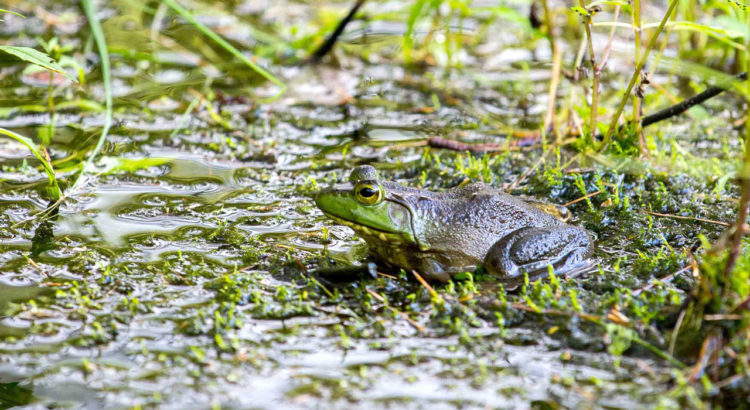
Simply marvelous, Froggi!
I learned so much! Very informative and interesting! Very well written and in-depth! Wish I lived closer to join the interpretative session!
Thank you!
Love the embedded calls! How fun! Good job!